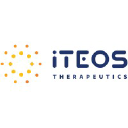Companies
Discover all trending biotech companies
Discover all trending biotech companies

Company Research Platform
Annual Revenue
$ 12,600,000
Global Employees
173
R&D Investment
37500000
This segment is dedicated to the discovery and development of novel cancer immunotherapies. iTeos focuses on modulating the tumor microenvironment to enhance the body's immune response against cancer cells. Key research areas include adenosine A2a receptor antagonism and TIGIT inhibition. The company employs cutting-edge technologies in molecular biology, biochemistry, and immunology to identify and validate new drug targets. Clinical trials are a crucial part of this segment, evaluating the safety and efficacy of iTeos's product candidates in various cancer types. The goal is to provide innovative treatments that improve patient outcomes and address unmet medical needs in oncology. Partnerships and collaborations with other pharmaceutical companies and research institutions are essential for advancing the development of these therapies.
This segment encompasses the clinical development and evaluation of iTeos's lead product candidates, including inupadenant (an adenosine A2a receptor antagonist) and EOS-448 (a TIGIT antagonist). The focus is on conducting Phase 1/2a clinical trials to assess the safety, tolerability, and preliminary efficacy of these therapies in adult patients with advanced cancers. Research and development activities involve optimizing dosing regimens, identifying biomarkers for patient selection, and exploring combination therapies to enhance treatment response. The segment also includes regulatory affairs, ensuring compliance with FDA and other regulatory requirements for clinical trials and potential drug approvals. Patient impact is a primary consideration, with the goal of developing therapies that offer significant clinical benefits and improve the quality of life for cancer patients. Future opportunities include expanding clinical trials to additional cancer types and advancing product candidates through later stages of clinical development.